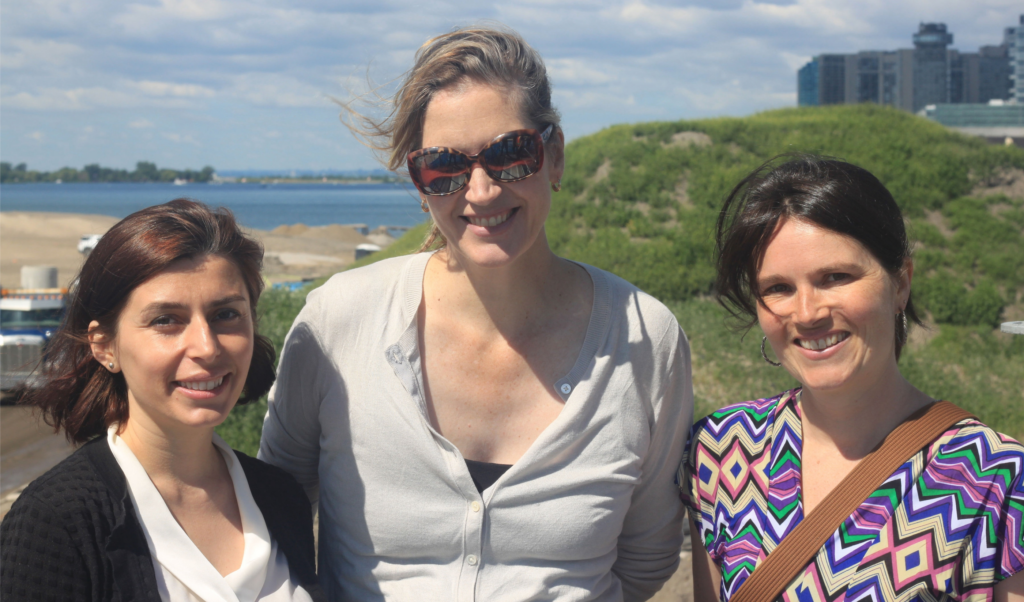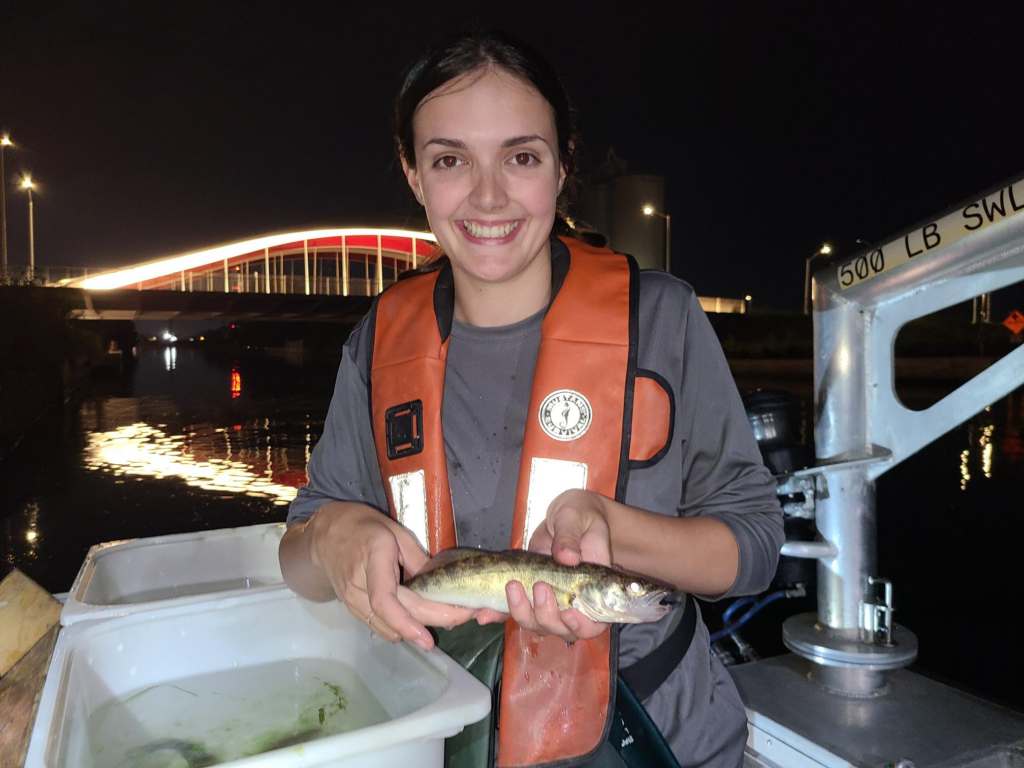Have you heard how Toronto’s industrial waterfront is being transformed?
Scaling UP!
This project scales up tried-and-true naturalization and sustainable building techniques, including:
- Removing concrete & adding meanders for flood mitigation & improved fish habitat
- Digging 1,000 m of new river channel, then creating floodplain and 13 ha of new coastal wetland
- Naturalizing and planting (Ontario plant nurseries ran out of native species in 2024 because of the scale of the effort!)
- Remediating contaminated soil
- Building sustainable and accessible public spaces, roads, bridges & utilities
| What was once the Ashbridges Bay Marsh two centuries ago became land for heavy industry, salt storage, and concrete production on Toronto’s waterfront in the 19th and 20th centuries. In 1987, the region was included on the International Joint Commission’s (IJC) list of 42 Areas of Concern for the Great Lakes. With much collective effort to reverse the damage, it will now serve three purposes: flood protection, naturalization, and revitalization through sustainable city building. The Don Mouth Naturalization and Port Lands Flood Protection Project is an award winning effort funded by all three levels of government to take active brownfield in Toronto’s Port Lands and bring back the natural mouth of the Don River. |
Earlier this summer, our team had a tour of the new rehabilitated Don river valley taking form and were impressed by the scale of collaboration. Together, Toronto and Region Conservation Authority (TRCA), Waterfront Toronto, and the City of Toronto are refining and implementing Michael Van Valkenburgh Associates’ winning concept for the Port Lands revitalization from the 2007 International Design Competition. These groups are working together to achieve flood protection, habitat restoration, and transportation connectivity, forming a healthy waterfront in which residents and other beings can live, work, and play.
We spoke with Rick Portiss, the TRCA’s Senior Manager of Aquatic Monitoring and Management, and Ken Dion, Waterfront Toronto’s Project Director for Port Lands Integration, about the culture of collaboration and long-term vision enabling this project.

A Culture of Collaboration
“Planning and implementation incorporate a multitude of disciplines to achieve this massive project. Collaborating across disciplines - biologists, engineers, and planners - was vital to designing a more holistic and innovative way of living with nature in the city."
Rick Portiss, 2024
Rick, whose passion is fish biology, recently caught a young walleye while fishing throughout the Island and the Keating Channel – an exciting discovery because walleye is a target indicator species for the area and the size of the walleye pointed to natural reproduction. This sign of improvement was decades in the making, spurred by thousands of individuals and millions of dollars of investment. Rick has been with the TRCA since 1993 and sees clearly how the original naturalization strategy outlined decades ago enabled myriad partners to learn together and ultimately contribute to the walleye’s regeneration.
Collaboration began with an aquatic habitat restoration group, which recommended enhancing the Toronto waterfront by starting a peer-review process of projects by government agencies and academics. The process was unique in Canada because it integrated feedback from all parties in a one stop shop for more holistic and coordinated planning. The Toronto Waterfront Aquatic Habitat Restoration Strategy (TWAHRS) and the culture of their collaborative table then informed efforts as the Don River project expanded to include a more diverse range of collaborators and rights holders.

A Multi-Generational Effort
“I came on the project in 2002 with TRCA and was brand new to the game – joining those who have been carrying the vision since 1989. I came on as the next generation to help carry the torch.”
Ken Dion, 2024
Successful collaboration stretches across time as well as disciplines. It takes generations working together to heal lands and waters. The original ambition was audacious – digging a brand new river through a contaminated industrial area and cleaning up an urban brownfield site. Many original champions have long since retired but groups like Lost Rivers invited new generations to imagine daylighting the buried rivers. A funding commitment from federal, provincial, and municipal partners allowed the work to come together.
Historically, efforts really gained momentum in 1989 when a large public meeting was held at the Ontario Science Centre – about 500 people showed up. The community demanded their government representatives and agency staff improve the Don watershed in its entirety. They wanted improved accessibility and quality of the waterways; to create spaces for enjoyment, recreation, and wildlife habitat.
1989
1991
Early 2000s
2004
|
The 1991 Task Force to Bring Back the Don did not disappear. Ken sees the thread of the members’ aspirational ideas in the ongoing work and collaborations that continue to this day. As the project moves towards the final stages of implementation, Rick is getting ready to retire and looks forward to watching the area grow and evolve into a unique natural heritage site for the next generation to steward and monitor. Both Ken and Rick see how the collective vision and initiative of committed collaborators and local champions kept people motivated to see the project through.

This story is one of collective dreaming and the power of community to hold up long-term visions until the foundations can be built up from below. What might we be able to imagine next?
